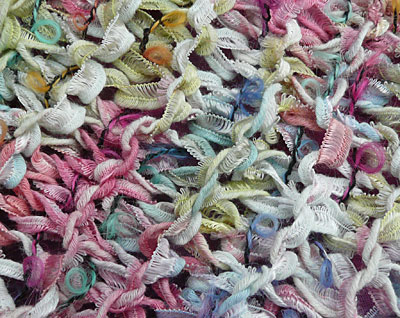A couple of things have caught my eye recently …
First is the new social network, Stitchin Fingers, started a few days ago by Sharon B of In a Minute Ago, and already looking like a great place for anyone who practises textiles to explore and enjoy.Â
Next is Spyn. Alan brought a short flyer back from CHI 2008 about “a system for knitters to record, recall and share information surrounding the processes of handcraft”. It’s a prototype design using digital techniques to literally craft personal stories into the knitting.
That set me thinking about metaphors we use in English that link story and fibre – we talk about losing or picking up the thread of a narrative; of spinning a yarn; of unravelling the truth. Maybe others…
I was also reminded this week, by this post on Blue Beyond by Tiree artist Colin Woodcock, of a Hans Andersen story I loved as a child. The princess spins a yarn of nettles to knit shirts that will free her brothers of the evil enchantment that has turned them into swans. Her hands are burnt and blistered and she is forbidden to speak, but the pain and love she may not articulate is embodied in the healing garments she creates.
And something else comes to mind – I’m always a little overwhelmed by the fact that text and textile are actually, etymologically, related:
“The word text is a cognate [of textile], coming from Latin textus ‘that which is woven’, referring originally to a particular style of Medieval script which was so dense that it looked like weaving.”Â
Quoted from Take Our Word for It Issue 33
I’m suddenly feeling very excited about the possibilities here.

